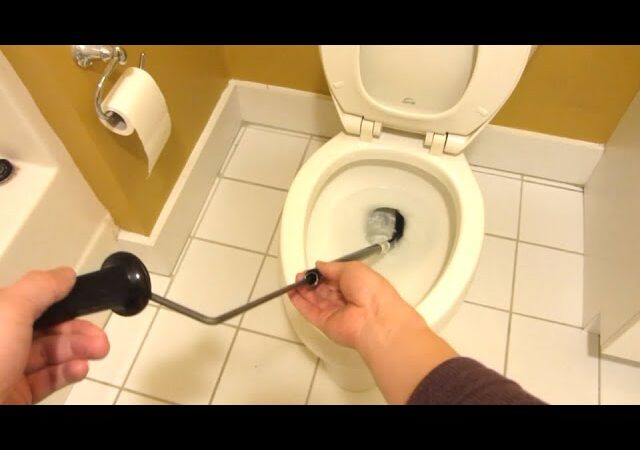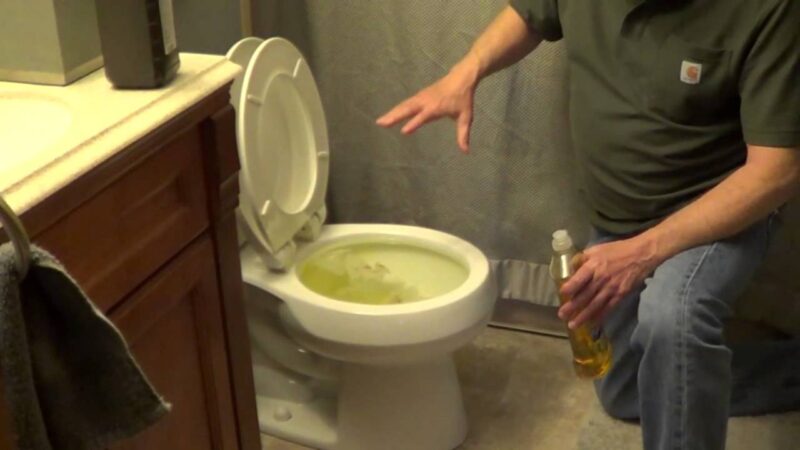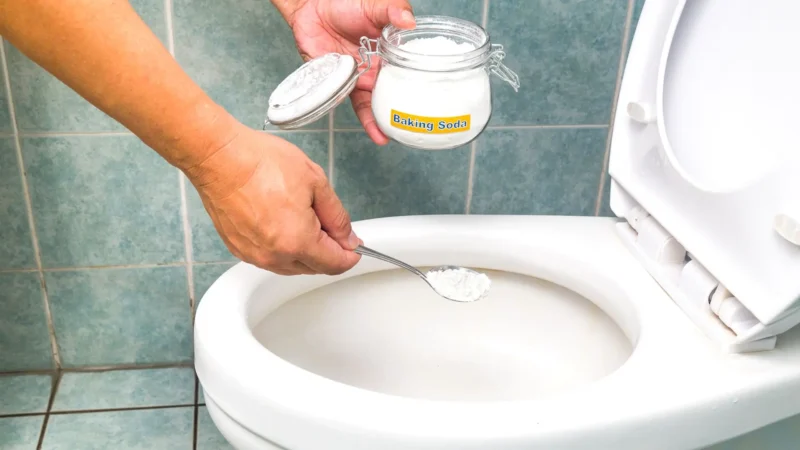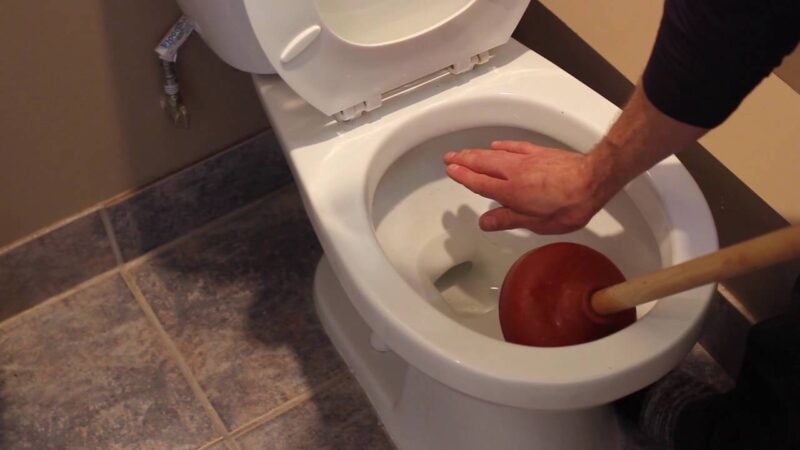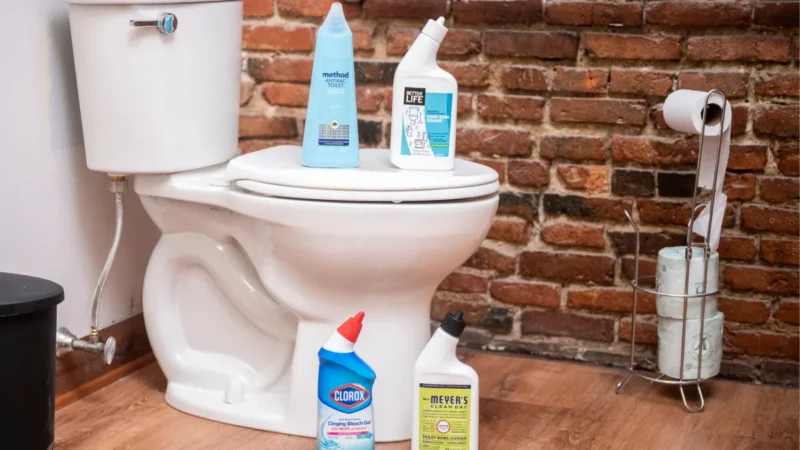Japanese Bidet Toilets: The Ultimate Guide to Comfort and Hygiene
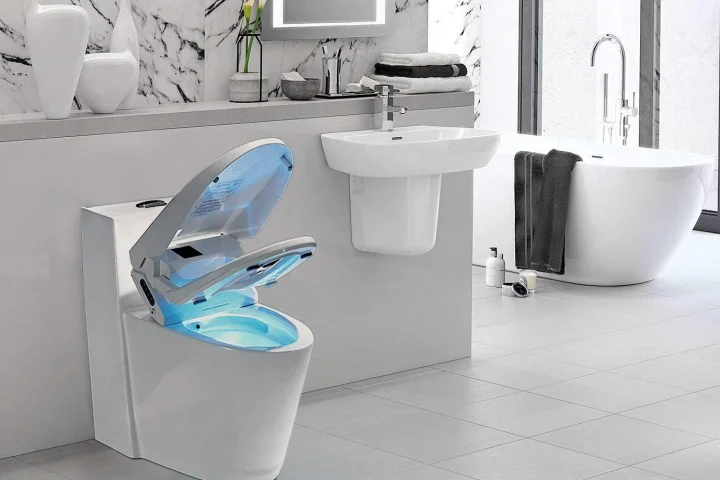
Japanese bidet toilets, also called washlets, are modern bathroom fixtures from Japan. They combine a regular toilet with a bidet for better hygiene. These toilets have features like heated seats, water jets for cleaning, and automatic flushing. They help you stay clean without using much toilet paper, making them eco-friendly and healthier. This article will explain the features, benefits, and why they are becoming popular worldwide.
What Is a Japanese Bidet?
Japanese bidets, including seats, attachments, or full bidet toilets, revolutionize bathroom hygiene by using a stream of water for cleaning, significantly reducing the need for toilet paper. Japan has set a high standard with these innovative, feature-rich designs, making the country synonymous with advanced bidet technology globally. These bidet seats and attachments are designed to fit effortlessly with your existing toilet, offering a straightforward installation process that typically takes just 15-30 minutes, making it a simple DIY project.
Upgrading Your Bathroom with Japanese Bidet Toilet Seats
Japanese bidet toilet seats are a fantastic upgrade for your bathroom, designed to replace your existing toilet seat and lid. These seats are available in both non-electric and electric versions. The electric models offer a wide range of desirable features that enhance comfort and hygiene, including:
- Heated Seats: Enjoy a warm seat, especially during cold weather.
- Warm Water Spray: Experience a thorough and gentle cleaning with adjustable water temperature and pressure.
- Automatic Lid Closing: The lid closes automatically after use, ensuring hygiene and convenience.
- Self-Cleaning Nozzles: The nozzles clean themselves after each use, maintaining hygiene.
- Warm Air Drying: Dry yourself with a gentle, warm air stream, reducing the need for toilet paper.
- Night Light: Some models come with a built-in night light for better visibility in the dark.
- Deodorizer: Helps to keep the bathroom smelling fresh by neutralizing odours.
- Remote Control: Customize and control all these features with an easy-to-use remote or mobile app.
These features not only provide a luxurious bathroom experience but also promote better personal hygiene and reduce the environmental impact by cutting down on toilet paper usage.
Japanese Bidet Attachments
Bidet attachments are a budget-friendly and easy way to upgrade your toilet. These attachments fit under your existing toilet seat and lid. Most of them do not need electricity, making them simple to install.
- No Electricity Needed: They work without batteries or electricity, making them easy to use.
- Easy to Install: They fit most toilets and are quick to set up.
- Adjustable Water Pressure: You can change the water pressure to suit your needs.
- Warranty: They often come with a 1-year warranty for peace of mind.
- Eco-Friendly: They help save toilet paper, which is good for the environment.
- Compact Design: They blend in well with your current toilet setup.
Bidet attachments are a practical and affordable way to improve your bathroom hygiene and comfort.
Pros And Cons Of Japanese Bidet Toilet
| Pros | Cons |
|---|---|
| Enhanced Hygiene: Cleans with water, reducing the need for toilet paper and improving personal hygiene. | High Cost: Advanced models can range from €1500 to €2000 or more, excluding installation costs. |
| Comfort: Features like heated seats, warm water sprays, and air dryers make using the toilet more pleasant. | Electrical Requirements: Requires a nearby power outlet, adding to the installation complexity and cost. |
| Health Benefits: Gentle water cleaning can prevent irritation and infections, beneficial for sensitive skin and conditions like haemorrhoids. | Complex Installation: This may require professional help, increasing the overall expense. |
| Eco-Friendly: Reduces toilet paper usage, conserving trees and reducing waste. | Increased Water Use: Some models use more water, leading to higher water bills. |
| Convenience: Automatic lid opening/closing, self-cleaning nozzles, and night lights add ease of use. | Maintenance: Additional features might require regular upkeep to function properly. |
| Personalization: Customizable settings for water temperature, pressure, and spray patterns via remote control or mobile app. | |
| Advanced Features: Includes deodorizers, built-in music or ambient sounds, and energy-saving modes. |
Difference Between Japanese Toilets and Japanese Bidets
Japanese toilets and Japanese bidets might sound similar, but they have some important differences:
Japanese Toilet
- Complete Setup: Japanese toilets, also called washlets, are full toilets that include bidet features. They have a lot of high-tech options to make using the bathroom more comfortable and hygienic.
- High-Tech Features: These toilets can include heated seats, warm water sprays, automatic lid opening and closing, self-cleaning nozzles, air drying, and even built-in music or deodorizers. You can control many of these features with a remote or mobile app.
- Integrated Design: The bidet functions are built into the toilet itself, making it an all-in-one unit that looks sleek and modern.
Japanese Bidet
- Add-On to Existing Toilet: Japanese bidets are either attachments or seats that you add to your current toilet. They give your toilet bidet capabilities without needing to replace the entire unit.
- Simple and Affordable: Bidet attachments and seats are generally more affordable and easier to install compared to full Japanese toilets. Non-electric models are particularly simple since they don’t need a power supply.
- Basic Features: These bidets usually offer essential functions like adjustable water sprays. Electric models might include extras like heated seats and warm water sprays.
Key Differences
- Integration: Japanese toilets are complete units with built-in bidet functions, while Japanese bidets are add-ons for existing toilets.
- Features: Japanese toilets have more advanced features compared to bidet attachments or seats.
- Cost: Japanese bidets are usually cheaper, especially non-electric versions.
- Installation: Bidet attachments are easy to install and don’t need electricity, making them a quick DIY project. Japanese toilets might require professional installation and a nearby power outlet.
In summary, Japanese toilets offer a full, high-tech bathroom solution, while Japanese bidets provide a cost-effective way to add bidet functions to your existing toilet. Both options improve hygiene and comfort, depending on your needs and budget.
Things You Need To Know Before Buying Japanese Bidets
Space Considerations
- Check Available Space: First, measure the space around your toilet to ensure there is enough room for a Japanese bidet. Some bidet attachments extend several inches from the side of the bowl, so make sure there’s clearance between your toilet and nearby cabinets, walls, or bathtub.
- Options for Tight Spaces: If space is limited, you might prefer a bidet seat that attaches to your existing toilet or a full Japanese bidet toilet that matches the dimensions of your current toilet.
Types of Japanese Bidets
- Bidet Attachments: These are installed under your existing toilet seat and are the most budget-friendly option. They usually do not require electricity, making installation straightforward.
- Bidet Seats: Replace your current toilet seat and can be either non-electric or electric. Electric models offer advanced features like heated seats and warm water sprays.
- Full Japanese Toilets: Complete units with integrated bidet functions, offering the most advanced features and a sleek design.
Features to Consider
- Electric vs. Non-Electric: Non-electric bidets are typically less expensive and easier to install. However, they lack features like night lights and adjustable nozzles found in electric models.
- Advanced Features in Electric Models: Electric Japanese bidets can include air dryers, massage washers, deodorizers, nozzle sterilization, nozzle oscillation, and multiple user profiles.
Installation Requirements
- Power Supply: Electric bidets require a nearby power outlet. Consider how you’ll run the cord discreetly or if you need to install an additional outlet.
- DIY Installation: Many Japanese bidet attachments and seats are designed for easy DIY installation. Full Japanese bidet toilets may require professional installation.
Luxury Features
- Air-Dryer: Dries you with warm air after washing.
- Massage Washer: Provides a comfortable, massaging wash.
- Deodorizer: Keeps the bathroom smelling fresh.
- Nozzle Sterilization: Ensures the nozzles are clean and hygienic.
- Nozzle Oscillation: Moves the nozzles for a more thorough clean.
- Multiple User Profiles: Allows different users to save their preferred settings.
Additional Considerations
- Budget: Determine your budget and choose a model that fits your needs. Prices range from affordable attachments to high-end full-bidet toilets.
- Maintenance: Consider the maintenance and upkeep costs for features like self-cleaning nozzles and air dryers.
- Eco-Friendly Benefits: Japanese bidets reduce toilet paper use, making them an environmentally friendly choice.
- Health Benefits: Improved hygiene and gentle cleaning can benefit individuals with sensitive skin or conditions like haemorrhoids.
How To Install Japanese Bidets Toilet
Installing a Japanese bidet can be a straightforward process if you follow these steps. Here’s a general guide to help you get started:
Installing a Japanese Bidet Attachment
- Turn Off the Water Supply: Locate the water valve near the toilet and turn it off to prevent any water flow.
- Remove the Toilet Seat: Unscrew the bolts holding the toilet seat in place and remove it.
- Install the T-Valve: Attach the T-valve to the toilet’s water supply line. This will allow you to connect both the bidet and the toilet to the water supply.
- Connect the Bidet Hose: Attach one end of the bidet hose to the T-valve and the other end to the bidet attachment.
- Mount the Bidet Attachment: Place the bidet attachment on the toilet bowl, aligning it with the bolt holes.
- Reattach the Toilet Seat: Place the toilet seat back on top of the bidet attachment and secure it with the bolts.
- Turn On the Water Supply: Turn the water valve back on and check for any leaks.
- Test the Bidet: Test the bidet to ensure it is working correctly and adjust the water pressure as needed.
Installing a Japanese Bidet Seat
- Turn Off the Water Supply: Turn off the water valve near the toilet.
- Remove the Toilet Seat: Unscrew the bolts and remove the existing toilet seat.
- Install the Mounting Plate: Attach the mounting plate that comes with the bidet seat to the toilet bowl.
- Connect the T-Valve: Attach the T-valve to the toilet’s water supply line.
- Connect the Bidet Hose: Attach one end of the bidet hose to the T-valve and the other end to the bidet seat.
- Mount the Bidet Seat: Slide the bidet seat onto the mounting plate until it clicks into place.
- Plug in the Bidet Seat: If it’s an electric model, plug the bidet seat into a nearby power outlet.
- Turn On the Water Supply: Turn the water valve back on and check for any leaks.
- Test the Bidet Seat: Test all the features of the bidet seat to ensure they are working properly.
Installing a Full Japanese Bidet Toilet
- Turn Off the Water Supply: Turn off the water valve near the toilet.
- Remove the Old Toilet: Disconnect the water supply line and remove the old toilet.
- Install the New Toilet: Place the new bidet toilet in position and secure it to the floor using the provided bolts.
- Connect the Water Supply: Attach the water supply line to the new toilet.
- Connect the Bidet Functions: Follow the manufacturer’s instructions to connect the bidet functions, including the T-valve and bidet hose.
- Plug in the Toilet: If it’s an electric model, plug the toilet into a nearby power outlet.
- Turn On the Water Supply: Turn the water valve back on and check for any leaks.
- Test the Toilet: Test all the features of the bidet toilet to ensure they are working properly.
Best Japanese Bidets
TOTO S550e WASHLET
- Features: Heated seat, warm water wash, auto-open and close lid, and a remote control. It also has an E+ water system that helps remove stains.
- Best For: Those wanting a top-notch, luxurious bidet.
- Pros: High-tech cleaning, user-friendly, great for seniors and people with disabilities.
- Cons: Expensive.
TOTO C200 WASHLET
- Features: Heated seat, warm water spray, personal settings, and a side control panel.
- Best For: People looking for quality features at a mid-range price.
- Pros: Affordable, easy to use, customizable.
- Cons: Fewer advanced features.
TOTO A100 WASHLET
- Features: Heated seat, warm water spray, and a side control panel.
- Best For: Budget-conscious buyers who want the basics.
- Pros: Budget-friendly, easy to install.
- Cons: Limited features.
INAX Heated Shower Toilet Seat
- Features: Heated seat, warm water spray, and self-cleaning nozzles.
- Best For: Those who want a reliable, comfy bidet seat.
- Pros: Comfortable, easy to install.
- Cons: Basic features.
Panasonic Handy Toilette DL-P300-A Portable Bidet
- Features: Portable design, battery-operated, and adjustable water pressure.
- Best For: Travelers needing a portable bidet.
- Pros: Portable, easy to use, adjustable.
- Cons: Limited water capacity, less powerful.
INAX RT Series Bidet Toilet
- Features: Heated seat, warm water spray, and self-cleaning nozzles.
- Best For: Those wanting a full bidet toilet.
- Pros: Reliable, comfortable.
- Cons: Basic features compared to high-end models.
Recommendation
Why Japanese Toilets Are the Best: The Evolution of Japanese Toilets
The Importance and Versatility of Toilet Paper Holders
How to Install a Toilet Paper Holder
Flush Valve Seal Replacement: A Simple Guide to Fixing a Running Toilet
How to Replace a Toilet Flapper: A Simple Guide to Fixing Leaks and Saving Water
Conclusion
In Conclusion, Japanese bidet toilets and bidet attachments are transforming bathroom hygiene with their advanced features and eco-friendly benefits. They provide a more comfortable and efficient way to stay clean while reducing the need for toilet paper. Whether you opt for a full bidet toilet, an electric seat, or a simple attachment, these innovations offer convenience, luxury, and improved personal hygiene. With options available for different budgets and bathroom setups, upgrading to a Japanese bidet is a smart choice for a cleaner and more comfortable experience.
FAQs
Q: What is a Japanese bidet?
A: Japanese bidets, which include bidet seats, attachments, and toilets, use water to clean, reducing the need for toilet paper. Japan has set a high standard with these advanced designs, and the country is still well-known for its innovative bidet products worldwide.
Q: Why does Japan have so many bidets?
A: Japanese people are known for their high standards of cleanliness. In fact, 72% of homes in Japan have a bidet-style toilet. This focus on hygiene has been part of Japanese culture for centuries. The popularity of bidets really soared in 1980 when the company Toto introduced the Washlet G Series.
Q: Is a Japanese toilet the same as a bidet?
A: In Japan, toilets are often more advanced than those in other developed countries. While European toilets sometimes have a separate bidet, Japanese toilets usually combine an electronic bidet with the toilet, offering a more integrated and convenient design.
Q: Are bidets healthier than wiping?
A: Yes, bidets are generally considered healthier than wiping with toilet paper. Bidets make it easy to clean your private parts after using the toilet or being intimate, without needing to use your hands much.

